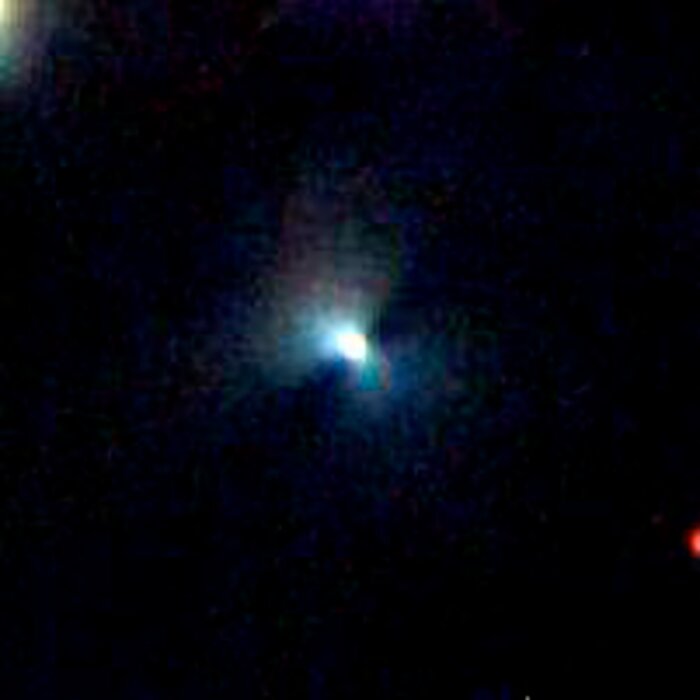A Large Disk Around a Young Star in NGC 1333
This image shows a large, nearly-edge on silhouette disk discovered in the NGC 1333 cluster using the FLAMINGOS infrared instrument at the 2.1-meter telescope at Kitt Peak National Observatory. This extremely large disk of dust and gas is roughly 3,600 Astronomical Units in diameter, roughly four times the size of any such disk seen previously. (One Astronomical Unit equals 93 million miles, the distance from Earth to the Sun.) The formation of flattened disks around forming “infant” stars has been a long-standing prediction of star formation theory. Not only do these disks provide a means of delivering material to the forming stars, they are also the sites of planet formation. Given the glare of the central star, such disks are all but invisible except when viewed at an angle where the dust in the disk blocks the light from the central star, making the disk visible in scattered light from the obscured star. The three colors in the image correspond to near-infrared wavelengths: red (2.2 microns), green (1.6 microns), and blue (1.3 microns).
Credit:University of Florida and NOAO/AURA/NSF
About the Image
| Id: | noao0308b |
| Type: | Observation |
| Release date: | May 26, 2003 |
| Related releases: | noao0308 |
| Size: | 201 x 201 px |
About the Object
Wallpapers
Colors & filters
| Band | Wave-length | Tele-scope |
|---|---|---|
| Infrared J | 1.3 μm | KPNO 2.1-meter Telescope FLAMINGOS |
| Infrared H | 1.6 μm | KPNO 2.1-meter Telescope FLAMINGOS |
| Infrared Ks | 2.2 μm | KPNO 2.1-meter Telescope FLAMINGOS |
